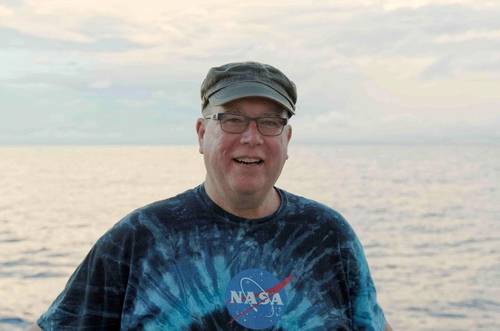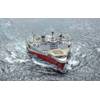Saildrone Hires New Chief Scientist
Saildrone announced the addition of Dr. Eric Lindstrom as Chief Scientist. Dr. Lindstrom has served as the Physical Oceanography Program Scientist in the Science Mission Directorate at NASA Headquarters in Washington, D.C for the past 22 years, working with the QuikSCAT, Jason-2, Jason-3, SWOT, and Aquarius satellite missions, and as well as leading the Earth Science Division Climate Focus Area. Dr. Lindstrom is set to retire from NASA at the end of November 2019 and will join the Saildrone team on December 2, 2019.
“Dr. Lindstrom has spent his entire career developing and quantifying ocean observing technologies. There is no one on this planet more qualified to spearhead the new Saildrone Ocean Observing Network,” said Saildrone CEO Richard Jenkins. “We are thrilled to add his experience and perspective to our team.”
As Chief Scientist, Dr. Lindstrom will oversee Saildrone’s science efforts, including observing system design, instrument selection, data quality, and sensor validation. Saildrone plans to deploy an additional 50 unmanned surface vehicles (USVs) during 2020, in a coordinated research effort to quantify and understand some of the biggest challenges facing our oceans, and ultimately, our planet.
“Our vast oceans play a key role in regulating climate, providing avenues for world trade, and providing a major source of protein for billions of people. The need for in-situ and remote sensing of the ocean has never been greater. Forecasting of weather, climate, and ocean circulation and managing key fisheries require reliable and continuing sources of high-quality data,” he said.
Dr. Lindstrom is currently serving as co-chair of the international Global Ocean Observing System Steering Committee and co-chair of the US Interagency Ocean Observations Committee (IOOC). As chair of the Ocean Observation Panel for Climate, he helped establish a web site of ocean climate indices, and as co-chair of the Task Team for an Integrated Framework for Sustained Ocean Observations, he created guidelines for system development entitled “The Framework for Ocean Observing.” He has degrees in Earth and Planetary Sciences from the Massachusetts Institute of Technology (1977) and Physical Oceanography from the University of Washington (1983). His scientific interests include the circulation of the ocean and air-sea exchange processes and include extensive experience in both sea-going oceanography and remote sensing. In 2013, he received the American Geophysical Union Ocean Sciences Award for leadership and service to the ocean science community.
“Saildrone is the best solution for many in-situ observing requirements. The global reach of the Saildrone fleet and its ability to collect high-quality data on air-sea interaction, gas transfer, biodiversity, and seafloor topography is unprecedented. I am happy to commit the rest of my career in oceanography to growing this critical capability and implementing a new ocean observing system for the next century,” said Lindstrom.














 December 2025
December 2025



